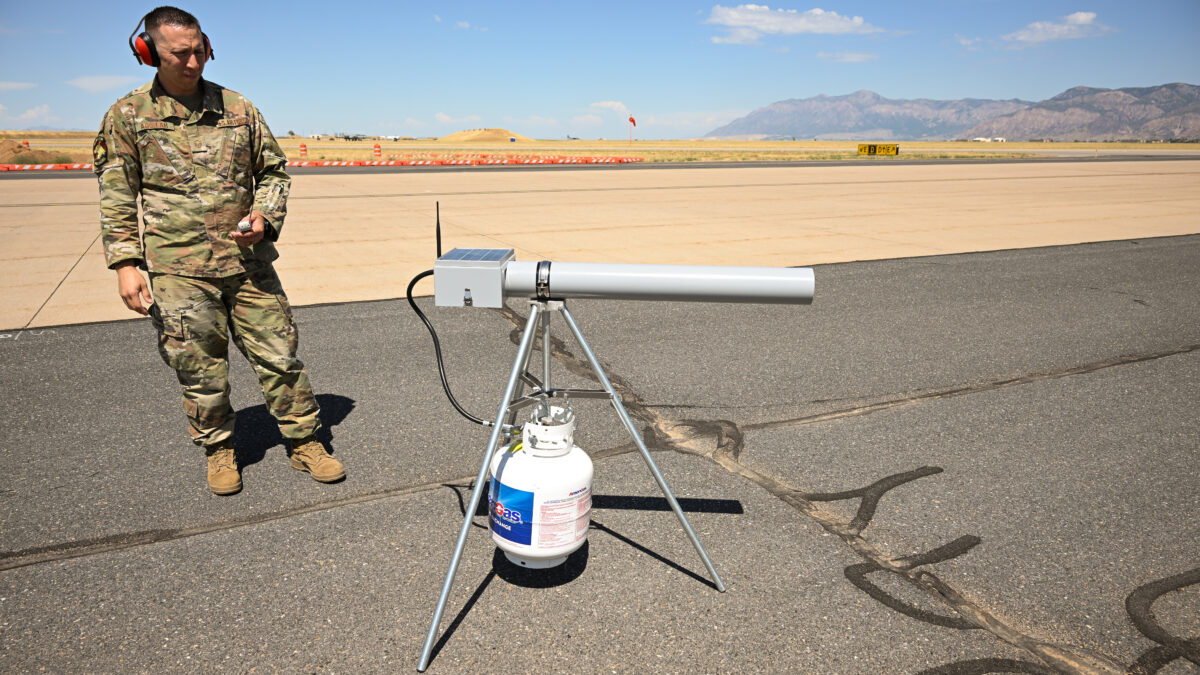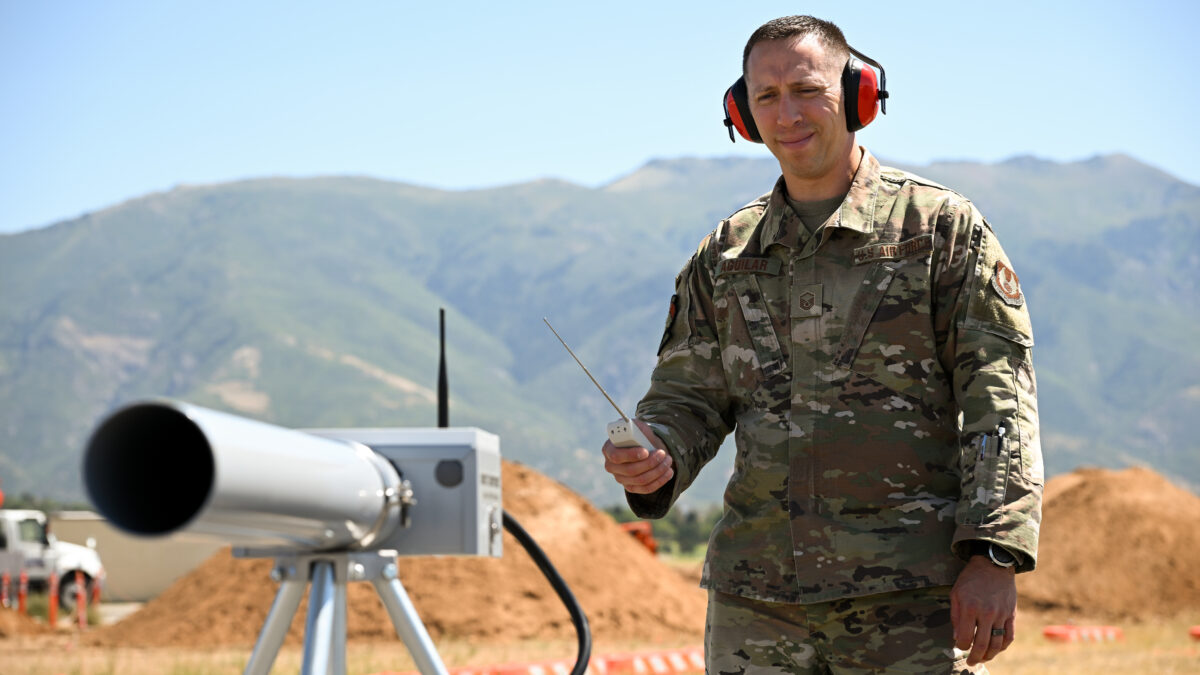New ‘bird cannon’ at Hill AFB keeping pilots, aircraft and wildlife safe
- Master Sgt. Chris Aguilar, 75th Air Base Wing Safety Office superintendent, fires a propane cannon on the airfield at Hill Air Force Base on Friday, Aug. 26, 2022. The cannon is used to reduce risks to pilots and aircraft by deterring bird activity on the flight line.
- Master Sgt. Chris Aguilar, 75th Air Base Wing Safety Office superintendent, fires a propane cannon on the airfield at Hill Air Force Base on Friday, Aug. 26, 2022. The cannon is used to reduce risks to pilots and aircraft by deterring bird activity on the flight line.

Photo supplied, R. Nial Bradshaw/U.S. Air Force
Master Sgt. Chris Aguilar, 75th Air Base Wing Safety Office superintendent, fires a propane cannon on the airfield at Hill Air Force Base on Friday, Aug. 26, 2022. The cannon is used to reduce risks to pilots and aircraft by deterring bird activity on the flight line.
HILL AIR FORCE BASE — Safety officials with the 75th Air Base Wing at Hill Air Force Base are using a new tactic to scare birds and other wildlife away from the airfield, a propane cannon. During periods of high bird activity, between September and March, a shotgun-like boom will occasionally be heard.
When activated, the “bird cannon” emits a pressure-regulated sonic blast at about 60 decibels by releasing a small amount of propane through a tube connected to the tank.
According to officials, the sound emitted is equivalent to a normal conversation and, depending on weather and wind conditions, may not be noticeable outside of the airfield.
Frequency of the cannon will depend on bird activity; however, its use will most likely occur in the evening around sunset when bird activity is highest.
Reducing bird activity around airfields is a must to protect aircraft, people and wildlife, officials say.

Photo supplied, R. Nial Bradshaw/U.S. Air Force
Master Sgt. Chris Aguilar, 75th Air Base Wing Safety Office superintendent, fires a propane cannon on the airfield at Hill Air Force Base on Friday, Aug. 26, 2022. The cannon is used to reduce risks to pilots and aircraft by deterring bird activity on the flight line.
Flight operations are risky when there is a high bird presence due to an increased risk of hitting birds during takeoff.
In March 2021, a chartered Delta flight from Salt Lake City International Airport carrying members of the Utah Jazz had just taken off from the runway when it struck a flock of birds, causing one of the jet engines to burst into flames.
While pilots were able to successfully land the aircraft back at the SLC airport, in the case of the infamous US Airways Flight 1549 dubbed the “Miracle on the Hudson,” pilots did not have the option to land back at New York City’s LaGuardia Airport. In January 2009, Flight 1549 hit a flock of geese shortly after takeoff, forcing pilots Chesley “Sully” Sullenberger and Jeffrey Skiles to land atop of NYC’s Hudson River.
Hill’s bird cannon is one of many mitigations used by the 75th ABW to reduce bird strikes. Last year, officials started using a fogger to release a grape-flavored chemical often found in beverages to coat insects and repel birds from critical areas of the runway.


